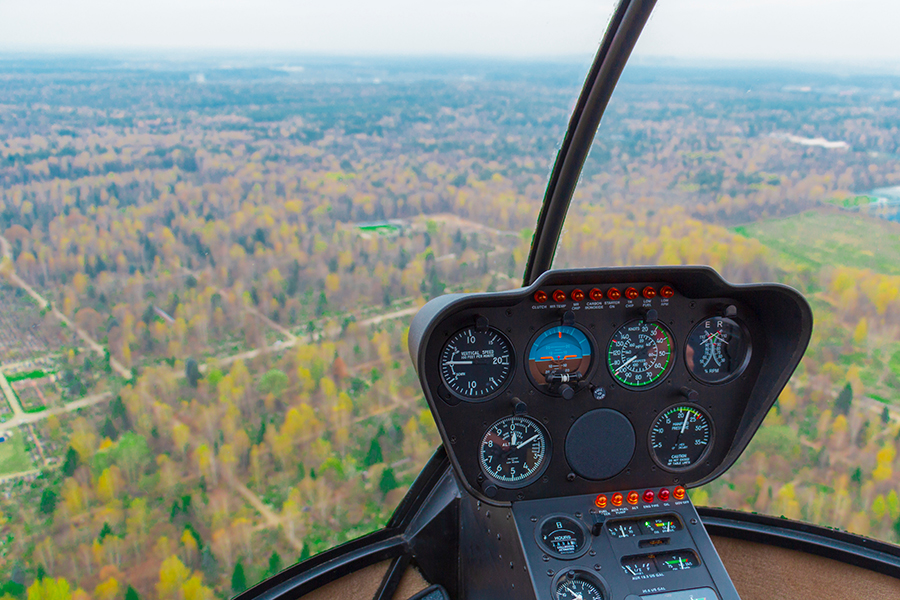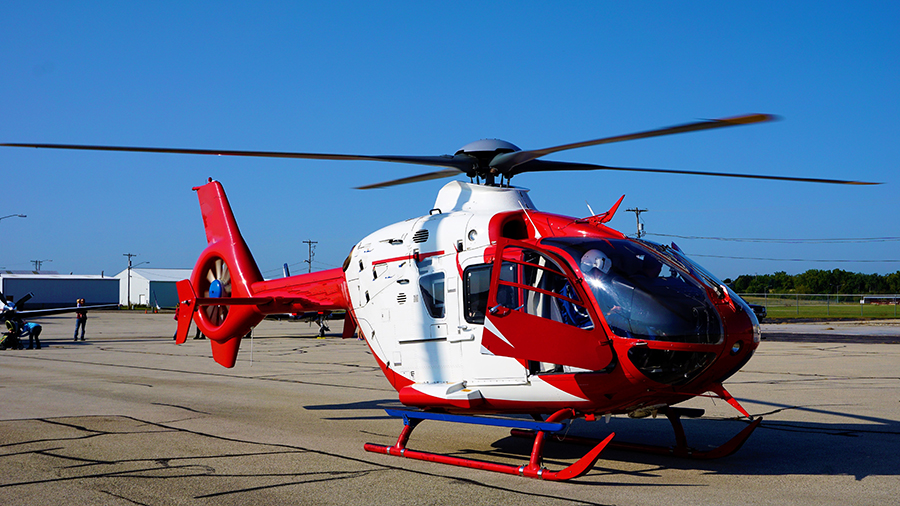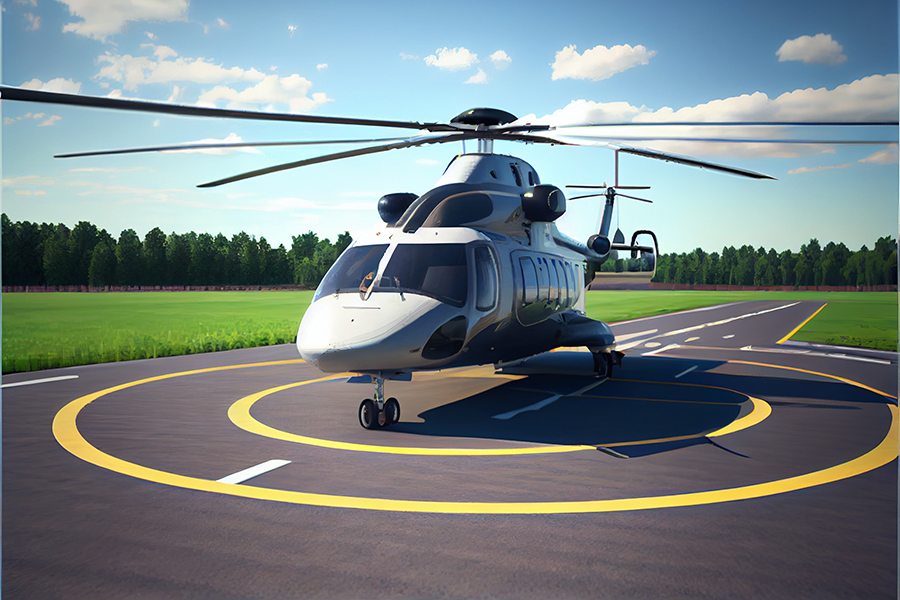Helicopters are incredibly versatile aircraft. They can do many things airplanes cannot do, such as hovering, landing in a small space, and flying extremely low.
But helicopters cannot do everything fixed-wing aircraft can, and most cannot fly as high.
Generally, turbine helicopters can only fly up to about 25,000 feet, while airliners regularly fly at 40,000 feet or even higher. And the height at which helicopters can hover is much lower than this, usually around 10,000 feet.
There are altitude safety limits stated in the Pilot’s Operating Handbook (POH) for each helicopter type. These should be adhered to for safety (and insurance) reasons.
Here is a list of the altitude limits for some well-known helicopters.
Helicopter Altitude Limit Examples
| Schweizer 300 CB | 10,000 ft |
| Robinson R22 | 14,000 ft |
| Bell 206 Jet Ranger | 13,500 ft |
| Eurocopter AS 350 Astar | 20,000 ft |
| Eurocopter SA 315B Lama | 23,000 ft |
| Agusta Z139 | 20,000 ft |
| Mil MI-26 | 15,100 ft |
| Boeing Chinook CH-47F | 20,000 ft |
However, the official altitude record for a helicopter flight is much higher than this.
The record for the highest helicopter flight is 12,954 m (42,500 ft), set by Fred North in 2002. The highest helicopter landing was on Mount Everest at 8,848 m (29,030 ft) in 2005.
We’ll take a look at Fred North’s epic flight in more detail later. But first, let’s examine why a helicopter can’t fly as high as a fixed-wing aircraft.
Why Can’t Helicopters Fly High?
The weight of the helicopter is an important consideration.
The more an aircraft weighs, the more power will be needed to lift it. Other things being equal, engine performance will be worse if a heavier weight must be lifted. And in the case of a helicopter, less power from the engine also makes it harder for the rotor blades to produce lift.
The next important consideration is that air is needed to power the engine, and the rotor blades need air to produce lift.
The air is thinner at high altitudes. In thinner air, it is harder for both the engine and the rotor to enable the helicopter to fly.
To summarize: helicopters tend to be quite heavy for their size, and the thinner air at altitude makes it hard for the lift to be produced. So flight at high altitudes becomes gradually more difficult for helicopters.
Environmental Considerations
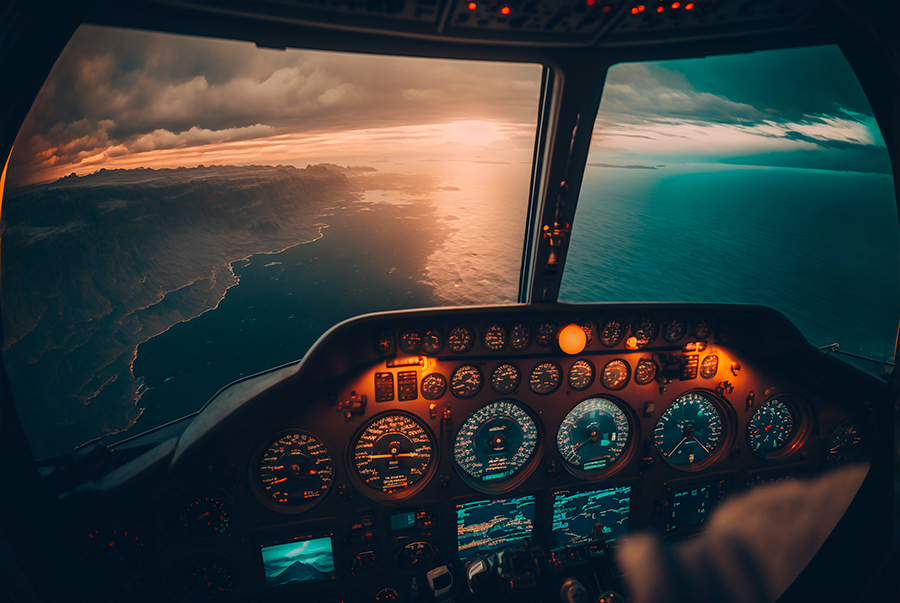
As explained, the air is thinner at higher altitudes. This is because air pressure reduces as you climb. The situation is worse if the environment is hot, or if conditions are humid.
Helicopter pilots, particularly those who operate close to the tropics, often refer to being “hot and high.” When hot air expands, fewer molecules are available for the engine to produce power and the rotor to produce lift.
Similarly, humid air holds more water vapor, so fewer air molecules are available to help produce lift in wet conditions.
This means that, at the same altitude, helicopters can actually fly higher in Alaska than they can in a humid environment on the equator.
Practical Issues
In theory, it is the thinner air at high altitudes that causes all the problems for helicopters. But practical considerations are also important when it comes to a real-life helicopter flight.
Firstly, you need to be able to do more than just fly. You usually have to hover, take off, and land for a real flight. Hovering requires a great deal of power, much more than forward flight. So there can be problems if you try to hover and land at high altitudes.
Hovering in the “ground effect” does make things easier.
“Ground effect” is the effect of a “cushion” of air, which forms close to the ground under a hovering helicopter, and helps to hold it up. This increases aerodynamic performance, and the result is that the helicopter can hover with less power. But it only works when the helicopter is around 1 – 1.5 rotor lengths above the ground. Any higher, and ground effect dissipates.
In real life, helicopter pilots often need to hover out of the ground effect, particularly for search and rescue operations such as winching or putting out fires. This sort of operation requires a great deal of power, so it is hard to do at high altitudes.
Additionally, when it comes to flying really high, most helicopters have no oxygen equipment and are generally not pressurized like airliners.
So it should be clear by now that flying helicopters at high altitudes is difficult, if not impossible.
But what actually happens if you try to fly a helicopter too high?
What Happens If You Try to Fly Too High in a Helicopter?
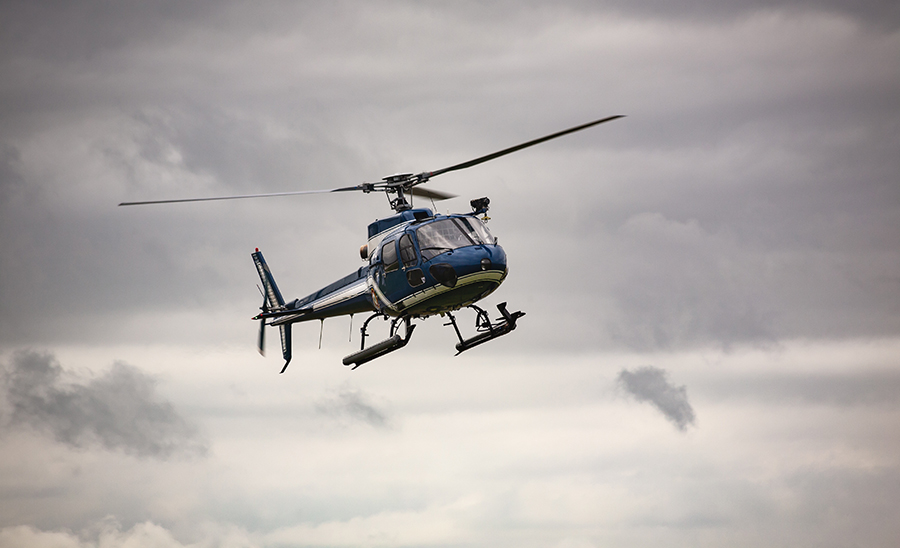
Flying high in a helicopter is not something you want to try.
Firstly, it’s not safe.
At extreme altitudes, a helicopter will start to behave very erratically. Turbulence occurs, the helicopter shakes and rattles, and it becomes very unstable. These conditions make it difficult for the pilot to control the aircraft.
Eventually, the engine will run out of power and fail.
Also, the rotors can run out of lift and the blades could stall. The tail rotor also becomes less effective, so the helicopter will start to rotate.
All this occurs because the engine and rotors do not have enough air molecules to produce the power and lift required, as explained above. But the result is that the helicopter will not be controllable. And the pilot really needs to be able to control the helicopter’s main rotor, tail rotor, and engine to enable safe flight.
Long before a flight becomes impossible, it will start to be unsafe.
Considering how dangerous a high-altitude flight in a helicopter is, you might be wondering, “How did Fred North fly to 42,500 feet?” It is a reasonable question. Let’s take a look at the details of his record-breaking flight, and how it was achieved.
Fred North’s Record-Breaking Flight
In March 2002, Fred North’s epic flight took place in an AS 350 B2 “Squirrel” helicopter.
Fred North was a very experienced helicopter pilot. He had 8,500 helicopter flying hours, 5,000 of which were on this helicopter type.
He planned the flight carefully, deciding to do it in Cape Town’s ideal weather conditions. He was also above mountains with frequent updrafts, which would help with the high-altitude flight.
Moreover, his helicopter was specially designed to break the previous altitude record. It was 200 kg lighter than the normal configuration of a Squirrel helicopter. Fred North wore a compression jacket to cope with the thinner air at altitude, and he had oxygen available as well.
Even so, the flight was not easy and was fraught with risk. Fred noted that the higher he went, the slower the helicopter became. It got to a point where he needed the rising air currents over the mountains to fly at all.
After an hour and a half, he decided that it was time to descend. He had beaten the previous altitude record, and had had enough!
Then he had an engine failure on the way down. Luckily, at high altitudes, there is plenty of time for an engine to restart at a lower altitude.
But Fred North never managed a re-start.
He performed an engine-off landing, and said after the flight: “I will never do it again.”
High Altitude Flying in Real Life
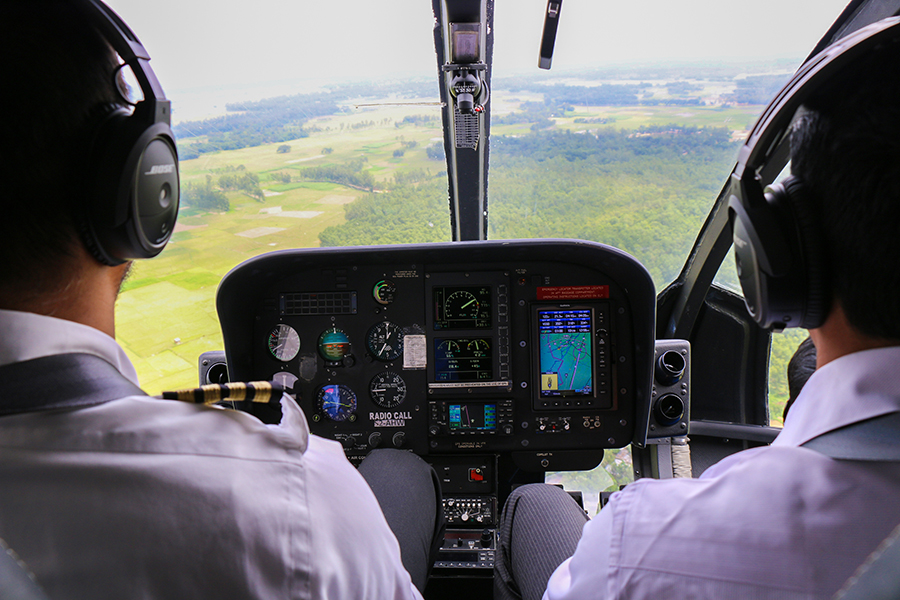
The above account might give you some idea of what high-altitude helicopter flying is like in real life. But most helicopter pilots don’t even get close to that high.
Nevertheless, most helicopter pilots are very careful if they find themselves flying in mountains, particularly in hot weather. The hazards of being “hot and high” are emphasized to every helicopter student, and most pilots are very careful to avoid it.
Mountain helicopter flying is very specialized, and many helicopter pilots go on specific courses to learn how to do it.
I have some experience with the hazards of being “hot and high.”
Many years ago, I was doing some flying in California as a relatively low-hour pilot.
One day, I wanted to go to a mountain airport situated at about 10,000 feet.
However, I was hiring an R22 helicopter, and the flight school owner sensibly insisted that I take an instructor with me in case there were any difficulties. I agreed, and Tim and I carefully calculated whether the flight would be safe on the day in question.
It looked as though it would, so off we went.
It was a lovely flight, with beautiful scenery. We landed safely, took some photos – as you do – then had lunch.
However, when we came to leave, the wind had dropped and the air temperature had risen. It seemed we would have difficulties hovering at 10,000 feet in those conditions.
So, how could we take off?
Luckily, we had a long runway. So we could do what is known as a “running take-off.”
This is a technique specifically for these situations. The collective (power) is raised until the helicopter is light on the skids, then it is moved forward until the lift is generated by the airflow, at which point the helicopter can take off safely.
It sounds similar to a fixed-wing take-off, and it is. I had practiced running take-offs many times as a student, but this was the first time I had ever needed to do one in earnest. It was also the last, so far!
I was lucky we had a runway, and, therefore, a lot of space. If we had landed on a mountain top where hovering was necessary and a running take-off impossible… Well, we would have had to wait a while for more of a headwind or cooler weather. I think this personal anecdote illustrates my point rather well.
Finally, I should mention that I knew someone who held the Robinson R22 helicopter altitude record for many years. Georgina had flown the R22 helicopter to around 18,000 feet, many years ago. This is very high for a piston-engined two-seater helicopter! She told me all about it and described how she was screaming in terror as she approached this altitude, with the helicopter reaching the limits of safe control.
She felt that she had held this record for far too long, and asked me if I’d like to try to beat it. She knew me well and knew that I had done a great deal of helicopter flying (and that I liked a challenge). She thought I was capable of it, and offered her help and advice.
I must confess that I gave it a lot of thought. In the end, common sense prevailed when I thought about how dangerous such attempts were.
I declined.
Sometimes I regret that decision. I’d love to hold a world record! But the risks are great, and I was old and sensible enough to consider them.
That was the closest I got to becoming a helicopter altitude record holder.
Conclusion
In a nutshell, helicopters cannot fly as high as fixed-wing aircraft for one simple reason.
They need more air than is available at altitude.
If they try to fly too high, either the engine runs out of power or the rotor blades run out of lift, or both. These will be the limiting factors for how high a helicopter can fly.
These factors will vary in different situations, of course. That is why pilots generally play it safe by referring to their helicopter’s manual. They also allow a margin of error to ensure that they do not run out of performance at just the wrong time.
As with all other machines, things are changing. Helicopters are gradually becoming more powerful, with newer models coming along with better performance. There may come a time when it is possible to fly much higher.
One day, it might even be possible to pick someone up from the summit of Mount Everest.
But there likely won’t be a time when helicopters can fly as high as fixed-wing aircraft.
They are just not designed for that.
They can do many other amazing things – hovering, turning on the spot, flying sideways and backward, and so on. But they are not high-altitude machines, and probably never will be.
Who needs to fly that high, anyway?
